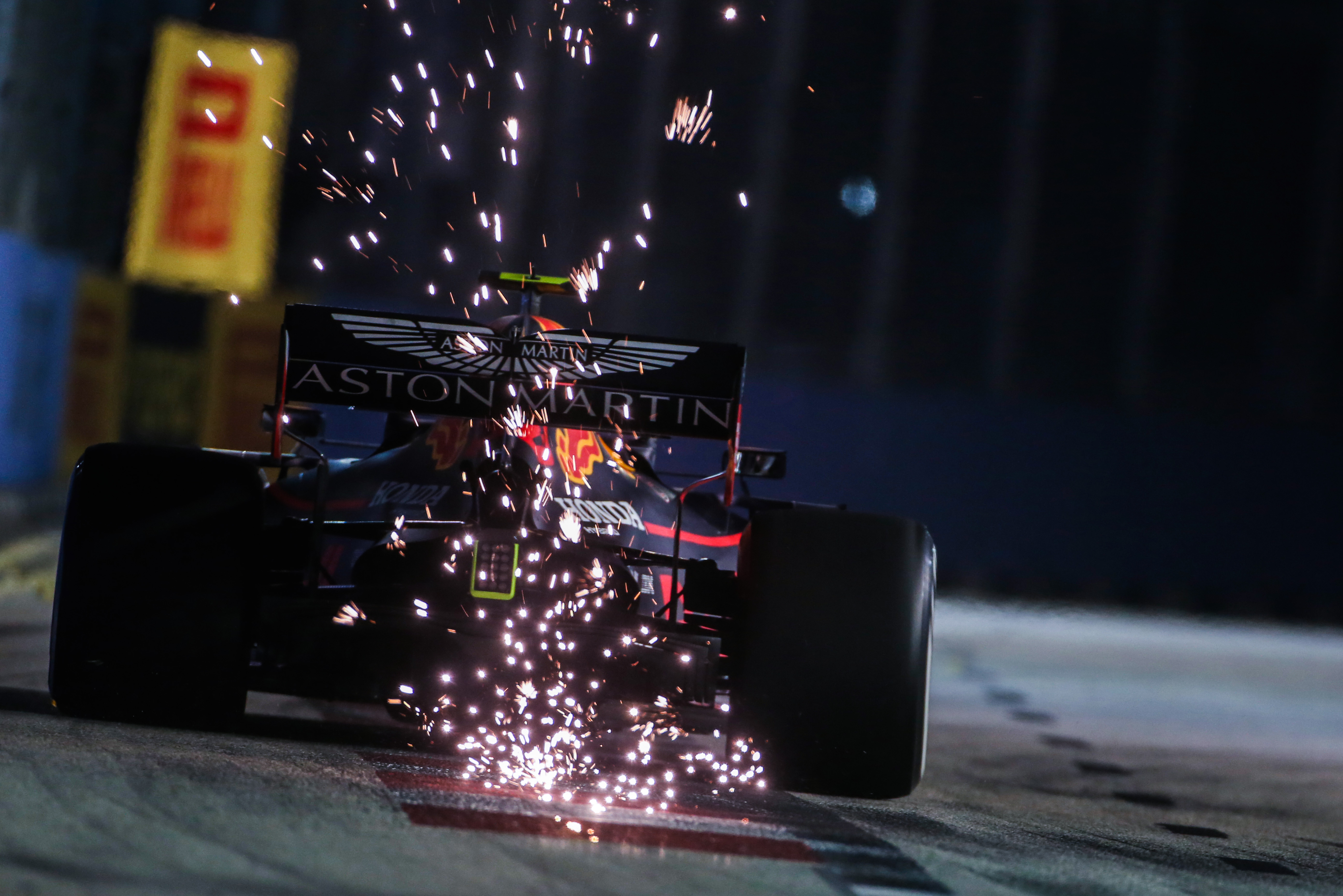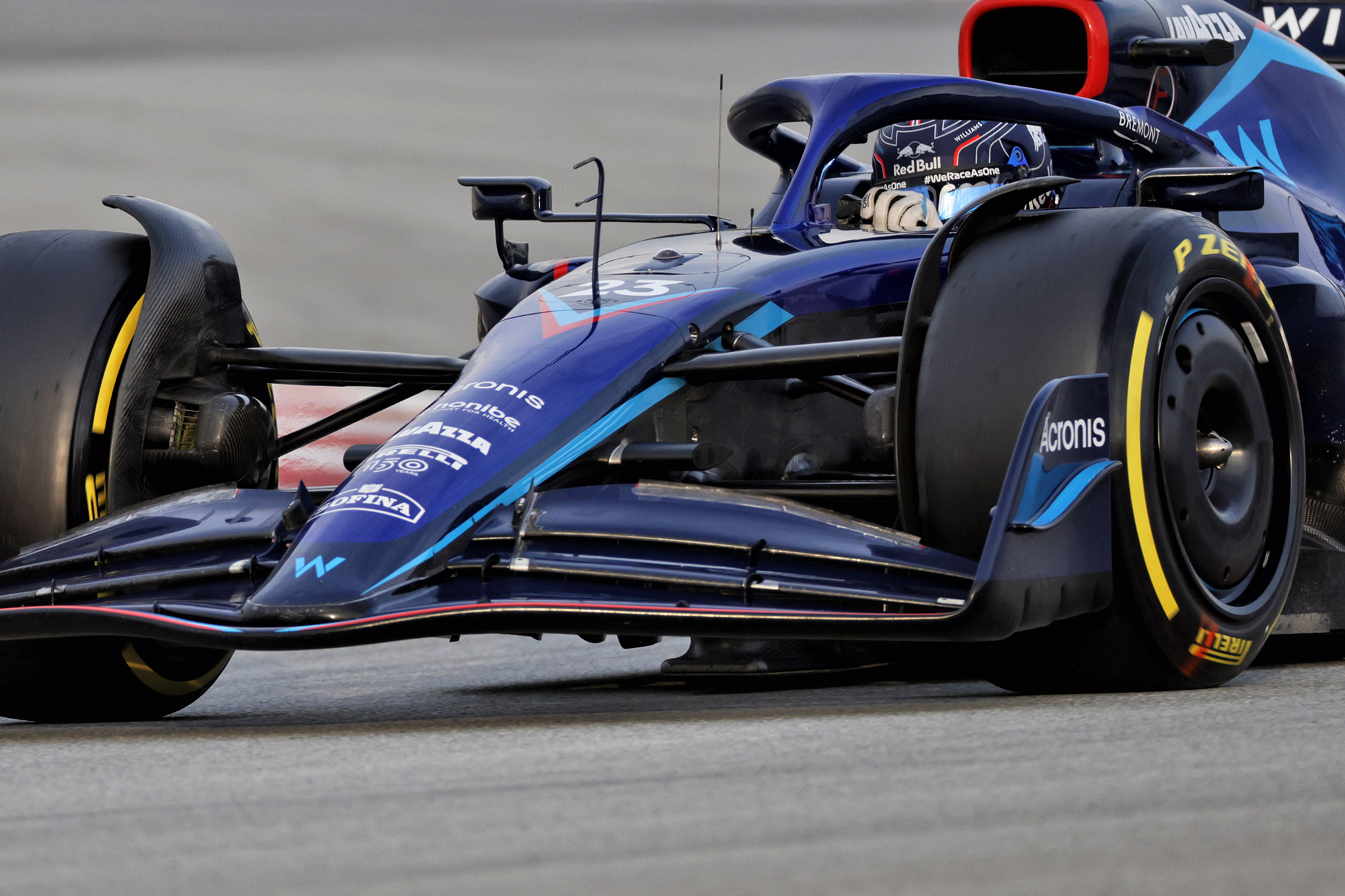Up Next

Barcelona this week offered the first hints of the 2022 Formula 1 cars’ key challenges, with the return of past ground effect headache ‘porpoising’ the headline issue.
But if teams and drivers found Barcelona bad for it, wait until they get to circuits with more bumps and aggressive kerbs than Barcelona.
In those scenarios, reckons Williams driver Alex Albon, the true difficulties of the 2022 F1 cars will be revealed and “porpoising is going to be terrible”.
Although Barcelona is demanding aerodynamically, it is a relatively smooth track since being resurfaced for 2018 and doesn’t require as much kerb use as other circuits.
Porpoising is effectively the car bouncing up and down because it is so close to the ground that its diffuser stalls, leading to the rear end rising as the load is reduced then dropping again as the load builds up again.
Its variants afflicted all teams to a greater or lesser extent at Barcelona, including Williams.
Albon said during the test that the porpoising he and Williams experienced on the main straight approaching Turn 1 “doesn’t really affect laptime that much so as long as it’s not damaging the car, you can kind of deal with it”. But believes the problem would be much worse at tracks such as Baku.
The Baku street track is bumpy and high-speed, which would exacerbate the porpoising effect.
“Barcelona has been a very nice track to drive on, it’s very smooth, one of the smoothest tracks we go to,” said Albon when asked by The Race about the stiffer cars.
“The porpoising is also pretty forgiving because we’re only getting it in one place, but we’re going to go to some tracks now where the porpoising is going to be terrible.

“Baku for instance, it’s not going to be very easy around there on a street track as well.
“Barcelona is almost an easy test… well, I’m not going to say an easy test for the cars but we’re going to see the true difficulties of the cars when we go to other circuits.”
Albon also argues the kerb use and the way the cars ride bumps will create bigger differences between teams at other circuits.
This will still not be a major problem in the opening test and grand prix in Bahrain, although there is a greater degree of exit kerb use at Sakhir.
He picked out Singapore and Austin, which are both bumpy circuits and, in the case of Singapore, one where kerb use is particularly important, as examples of this.

The 2022 cars are stiffer and react more aggressively to bumps and kerb strikes thanks to a combination of the simplified suspension systems, the reduced compliance in the shallower Pirelli tyre sidewalls and the need to hold the cars in a narrower ride height window to maximise the ground effect aero.
“You can still use them,” Albon said of the kerbs. “It’s more that the platform is more disturbed at high speeds.
“In the low speeds they are not too bad but at Barcelona there’s only Turn 14/15 that we start jumping.
“I think at tracks like Singapore, or for instance, Austin, it’s going to get tricky.
“That’s where you are going to really see compromises between cars that have got downforce but are on the edge and vice versa, maybe some with a bit less [downforce] but are a bit more forgiving.”
Although Baku, Marina Bay and Austin are all a significant distance into the 2022 calendar, meaning teams will have had chance to adapt to the cars more and find solutions to some of the problems they experienced in the initial test this week.
But the underlying issue of minimising porpoising and the increased peril of kerb use will be an ongoing factor with the new regulations.

All the 2022 F1 drivers have had to prepare in the driver-in-loop simulator over the winter and then make further adjustments once behind the wheel of the physical cars this month.
Albon believes the 2022 cars won’t be especially difficult to drive now that it’s been possible to adapt to the increased weight (the 2022 minimum mass is 43kg heavier than last year) and greater stiffness.
“The cars feel good,” said Albon when asked by The Race about the challenge of adapting.
“Once a car is balanced properly, there’s not much difference in what makes a car fast. It might be slightly different in terms of balance, but not really.
“I’d say more than anything it’s the weight that you can feel and it’s the stiffness of the car.
“Obviously, everyone is running them as low as they can and you get that feeling in your bum and as you can see down the straights as well with all the shaking going on.
“Driving style wise, they feel more like a mixture between an F2 and an F1 car. They are so stiff, you’ve just got to be in tune with the track, all the bumps, you’ve got to be precise with your driving because you can’t be clumsy and hit kerbs because it loses laptime pretty quickly.
“There’s subtleties to it, but at the end of the day once the cars are finely tuned the cars will get more similar.”




